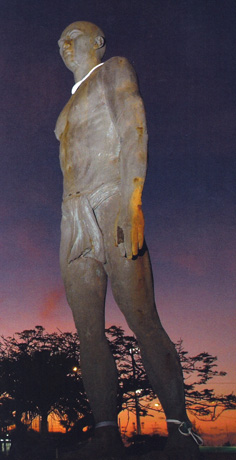Padre Diego Luis de San Vitores Lands on Guam:
- In June 6, 1668 Padre San Vitores landed off
shores at Hagåtňa.
- In the Craft was a missionary, Padre Diego Luis
de San Vitores, with other priests and soldiers.
- They established a catholic mission in the
Marianas.
- Chief Kepuha was presented with gifts such as
velvet hats and iron nails. The missionaries then told the chief their true
intentions of teaching them the law of God and the way to heaven. Spanish
accounts say Kepuha had favorable reactions, and make them welcome.
- As was common strategy of the Jesuits they
converted the Chamorro chiefs in order to convert the people.
- Kepuha allowed
himself to be baptized by San Vitores as Juan Kepuha.
- He was faithful to his religion and
volunteered land for the church site. ( The maga’haga of his clan must’ve had
some decision of granting land.)
- He lived up to his appointed role as
protector of the Hagåtňa mission.
- Spanish gave
him the title of Don Juan Kepuha, naming him after St. John the Baptist who
they had chosen as the islands protector.
Historical Perspective:
- Chiefs did not understand that Christianity
was going to change Chamorro social order and way of life so drastically. Once
the chiefs realized that the class structure would be abolished by Christianity
along with the Guma’ Uritaos and other customs, they changed their minds about
accepting it.

